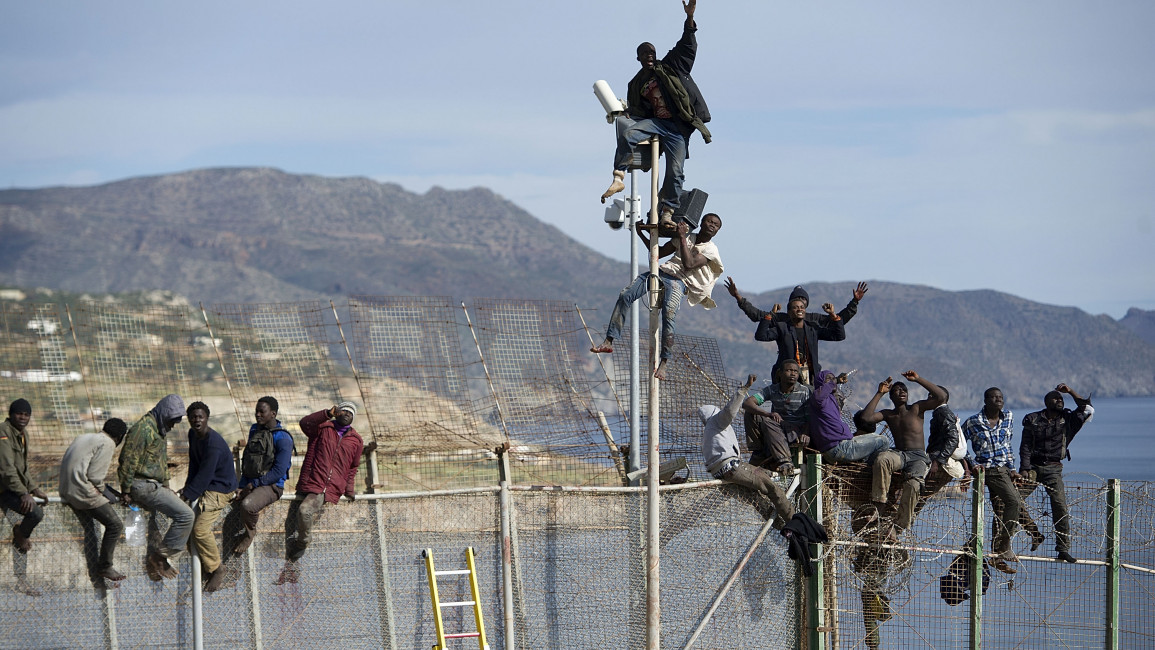CNDH: Melilla migrants 'likely suffocated' as Spanish authorities 'hesitated' to provide medical care
At least 23 migrants who died last month in a mass attempt to enter the Spanish enclave of Melilla from Morocco likely "suffocated", Morocco's state-backed Council of Human Rights (CNDH) said on Wednesday.
In a much-awaited press conference held on Wednesday, CNDH, a national institute in charge of investigating human rights issues, issued a 30-page-long preliminary report of the council's fact-finding mission to Nador, where the Melilla massacre occurred.
On Friday 24 June, around 2,000 migrants attempted to cross from Morocco's Nador to the Spain-controlled enclaves of Melilla and Ceuta, which have two of the EU's only land borders with Africa. The response by what is believed to be Moroccan and Spanish authorities led to numerous migrants killed and dozens injured.
Moroccan authorities said 23 migrants died and 77 were injured.
Rabat also said 140 members of Moroccan law enforcement officers were injured during "clashes" with the "armed migrants".
CNDH's new report lends support to Rabat's official narrative, saying that migrants used stones, sticks and sharp tools to storm the fences that separate Morocco's Nador and Spain-controlled Melilla.
Adil El-Sehimi, a doctor who examined the bodies during a CNDH fact-finding mission, said the migrants had most likely died of "mechanical asphyxiation" when a force or object prevents a person from breathing.
"The other potential causes of death included massive jostling in a tightly secured and very narrow space at the crossing station and falling as the barbed-wire fence (…)," added CNDH in its report.
CNDH chief Amina Bouayach said 23 migrants had died in the incident, confirming the official toll.
None of the dead have been buried and autopsies were pending, Bouayach told a press conference in Rabat to present the initial findings of the CNDH probe.
The number 23 is highly debatable by other Moroccan and Spanish NGOs.
The Spanish NGO Caminando Fronteras has raised the death toll to 40.
The Moroccan Association of Human Rights (AMDH), which documented the horrendous violence used against migrants on the day of the massacre, said at least 27 migrants died.
"The death toll is set to rise as many migrants are severely injured," Mohammed Amine Abidar, head of AMDH Nador told The New Arab.
The United Nations, the African Union and independent rights groups have denounced the use of excessive force by Moroccan and Spanish security personnel.
Five days after the incident, Human Rights Watch (HRW) cited "reports that the authorities in Morocco may be organising hasty mass burials", along with photographic evidence of recently dug graves in nearby Nador.
HRW also said a video showed a Moroccan security agent "beating obviously injured men prone on the ground and another agent throwing a limp body onto a pile of people".
In other findings about the massacre, CNDH said Spanish authorities hesitated and refrained from providing immediate assistance and medical care to migrants.
The council stressed that Moroccan authorities have used only tear gas and truncheons in their confrontation with “the extremely violent migrants”.
In its comment on the videos shared on social media picturing Moroccan forces beating handcuffed injured migrants, CNDH said those were just "individual cases," which it condemns.
The council has also flagged many other videos and pictures documenting the violence on the massacre day as "disinformation" and "fake news".
CNDH's report has evoked several social media reactions, with many activists lambasting it for its pro-authority narrative.
CNDH presents itself as a national, pluralistic and independent institution.
It was created in March 2011, amid the Arab uprisings, as a means for reform in Morocco, replacing the Advisory Council for Human Rights that was established in 1990 by former King Hassan II.



